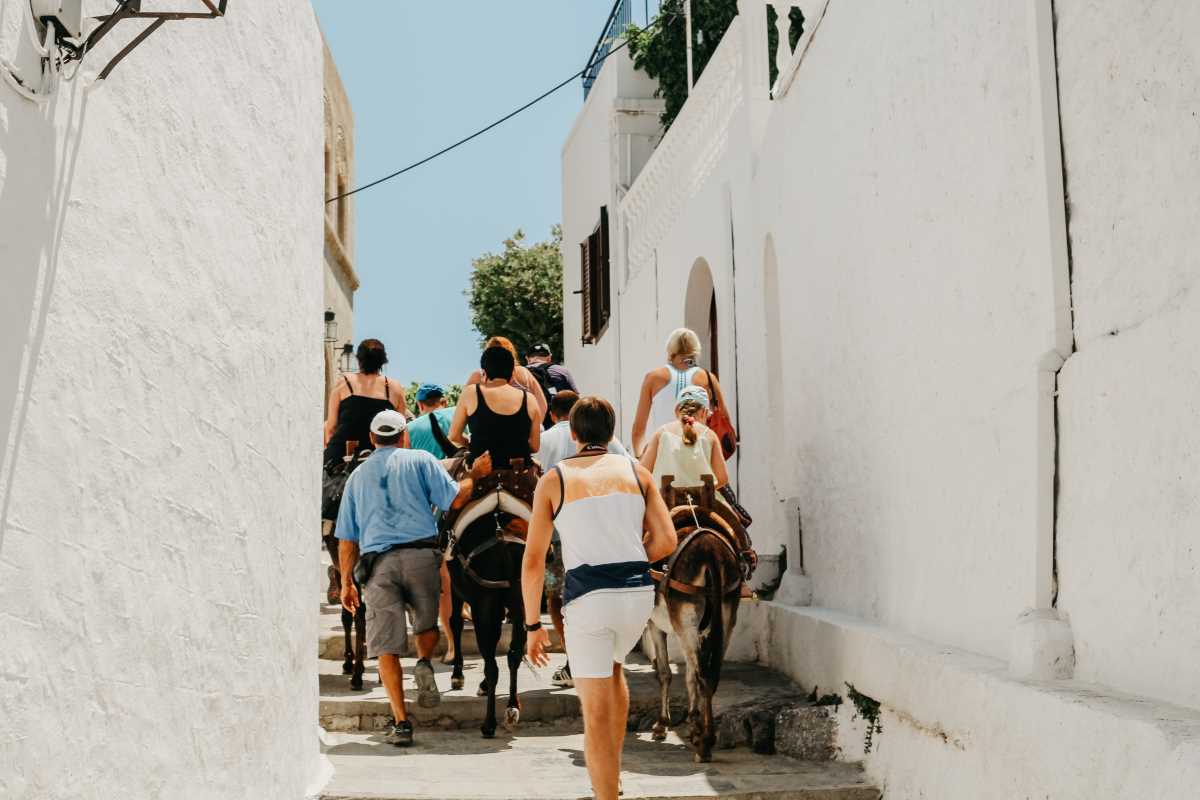Lisbon’s Alfama district is like stepping straight into a storybook. With its labyrinth of winding streets, colorful houses adorned with decorative tiles, and the gentle hum of fado music in the air, it’s hard not to fall in love. The district, one of the oldest in Lisbon, is brimming with history and charm, making it a must-visit destination for those looking to experience authentic Portuguese culture. Alfama’s Moorish roots and vibrant energy make it a delightful mix of the past and present. Its vibrant streets are filled with hidden gems, iconic landmarks, and a welcoming local vibe. Whether it’s wandering through narrow alleys or enjoying a panoramic view from a scenic hilltop, exploring Alfama offers unforgettable experiences that connect you to Lisbon’s rich and colorful soul.
A Living Piece of History
Alfama is a living museum. This area dates back to the time of the Moors, who ruled Lisbon before the 12th century. Its layout is entirely different from the modern parts of Lisbon. The twisting streets and tightly packed houses were designed to keep the summer heat out, and this structure has remained largely untouched for centuries.
What makes Alfama exceptionally special is that it survived the catastrophic 1755 Lisbon earthquake. While much of the city was destroyed, Alfama stood its ground, preserving a snapshot of medieval Lisbon. Today, walking through these streets is like stepping back in time.
Look out for the famous azulejos (hand-painted tiles) decorating many of the houses. These tiles are not just decorative but also tell stories from Lisbon’s history. You’ll find images of saints, patterns inspired by Moorish art, and even scenes from Portugal’s maritime discoveries.
Key Attractions You Can’t Miss
Castelo de São Jorge (St. George’s Castle)
The top of Alfama is crowned by the iconic St. George’s Castle. This fortress sits on one of Lisbon’s seven hills, offering sweeping views of the city and the Tagus River. Dating back over a thousand years, the castle has witnessed countless battles and rulers. Apart from exploring the historic walls, you can relax in the gardens and even spot peacocks strutting around!
Locals recommend visiting in the late afternoon to catch the sunset. The golden glow on the terracotta roof tiles below is unforgettable.
Sé de Lisboa (Lisbon Cathedral)
Another major highlight is Lisbon Cathedral, locally known as the Sé. This Romanesque church is one of the oldest in the city. Its towering facade and grand arches stand as a reminder of Lisbon’s medieval past. Step inside to admire the beautiful interior, including intricate stained-glass windows.
If you’re a fan of history, head to the cloisters, where you’ll uncover archeological ruins that date back to Roman times.
Miradouros (Viewpoints)
Alfama is famous for its miradouros, or viewpoints, and you shouldn’t skip them. Two of the best are Miradouro de Santa Luzia and Miradouro das Portas do Sol. These spots not only offer incredible panoramic views but are perfect for soaking in the laid-back vibe. You might witness street musicians playing traditional fado, a soulful style of music that originated in Alfama.
Take your time here. Grab a coffee, snap photos, and just enjoy the beauty of Lisbon sprawling out below you.
Hidden Gems and Local Secrets
Alfama has plenty of tucked-away treasures that make it unforgettable.
Alfama’s Backstreets
The real magic of Alfama lies in its labyrinth of alleyways. Wander off the main paths to find tiny courtyards, colorful laundry lines, and locals chatting on their doorsteps. These spots are quiet and offer a glimpse of daily life in the district.
One charming little corner is Beco da Cardosa, a winding alley that seems frozen in time. The mix of flowers, cobblestone paths, and tiled walls feels like something out of a movie set.
Museu do Fado (Fado Museum)
Fado is music that's a heartfelt expression of Portugal’s soul. At the Fado Museum, you can learn about the origins of this hauntingly beautiful genre. The exhibitions showcase instruments, costumes, and even recordings from fado performances. It’s worth a visit for anyone curious about Lisbon’s cultural heartbeat.
Local Taverns and Tascas
No visit to Alfama is complete without sampling its food. Skip the fancy restaurants and head to the tascas, small family-run eateries that serve traditional dishes. Look for places serving bacalhau à brás (a flavorful codfish dish) or sardinhas assadas (grilled sardines). These taverns often feel like stepping into someone’s dining room, with hearty portions and unbeatable hospitality.
One hidden gem often recommended by locals is Tasca do Chico. This tiny spot serves up tasty petiscos (Portuguese tapas) and even hosts intimate fado performances at night.
Tips for Exploring Alfama Like a Local
Wear Comfortable Shoes
Alfama’s streets are charming but not exactly smooth. The cobblestones can be tricky, so comfortable shoes are a lifesaver.
Start Early
Alfama is a popular spot with tourists, but mornings are often quieter. If you want to enjoy the peace of the narrow alleys and photogenic moments, head out before the crowds arrive.
Use Public Transport
Lisbon’s iconic Tram 28 passes through Alfama and is as much an experience as it is a practical way to get around. The tram rumbles past historic landmarks and climbs steep hills, giving you a charming 30-minute ride. Just be aware that it can get very crowded later in the day.
Bring Cash
Though Lisbon is modern, many smaller businesses in Alfama still prefer cash, especially the family-run tascas and smaller shops. It’s always useful to have some euros in your pocket.
Stay Curious
Getting lost in Alfama isn’t a mistake; it’s the point. The district’s twisting streets don’t follow a grid, and that’s part of its magic. Just wander, and you’ll stumble upon unexpected beauty, whether it’s a mural, a quiet plaza, or a friendly local eager to share a story.
A Taste of Culture
Alfama doesn’t stop buzzing when the sun sets. The district comes alive with traditional fado performances in cozy taverns and cafes. For a truly local experience, skip the big fado houses catering to tourists and find a smaller venue. The intimacy of hearing fado in a tiny, dimly lit room is unforgettable.
And don’t miss out on the festivities if you visit in June. Alfama is the heart of Lisbon’s annual Santo António Festival, a month-long celebration of the city’s patron saint. Expect street parties, grilled sardines, and dancing until the early hours.
Whether you’re marveling at the views from a miradouro, getting lost down cobblestone alleys, or swaying to the sounds of fado, Alfama promises moments that stick with you long after your trip ends. Take your time here. Feel the rhythm of the district. You’ll find that Alfama is a place to be experienced.
 (Image via
(Image via





